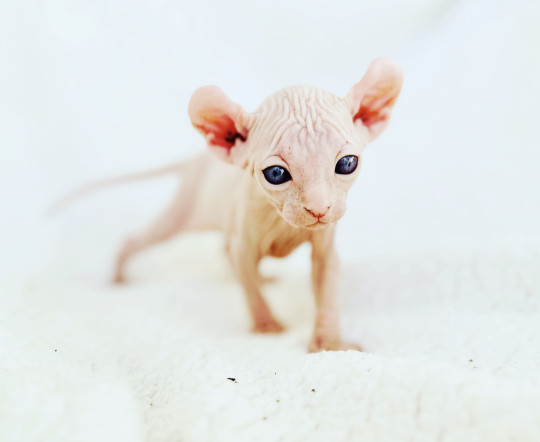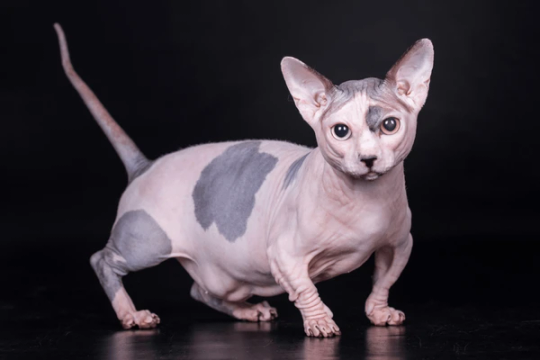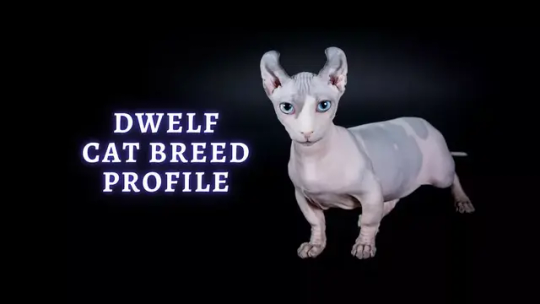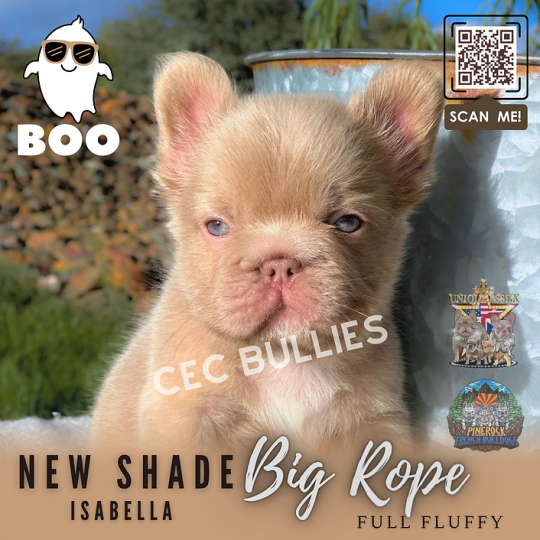#Sphynx Breeder
Explore tagged Tumblr posts
Photo

Excellent image on sphynx kittens for sale near me
0 notes
Text
#france#animals#cute cats#germany#cats of tumblr#europe#berlin#pets#Sphynx kittens for saleHairless kittens for saleSphynx breedersSphynx kittens near meSphynx kittens Sphynx for saleSphynx cat breeders#Sphynx kittens for saleHairless kittens for saleSphynx breedersSphynx kittens near meSphynx for saleSphynx cat breeders
4 notes
·
View notes
Video
youtube
Amazing video on sphynx cat breeders
#sphynx cat for sale california#sphynx cat kitten#Sphynx Cattery in USA#hcms scanning breeder#munchkin sphynx cat
3 notes
·
View notes
Photo

Incredible image on black sphynx kitten
2 notes
·
View notes
Text
*sigh longingly* i wish there was somewhere i could just hang out w specific breeds of cats so i can do an allergen test :/
#shut up danni's talking#im allergic so some breeds literally make me wheeze but bc i am weak i will always want cuddles#but sometimes i get lucky and the cat only slightly makes my allergies flare#there are a few allergy friendly cat breeds that minimise it and i wanna hang out w some of them#but unless you talk to a breeder and ask its unlikely :/#anyways i REALLY want to see how bad sphynx cats trigger my allergies bc they're so cute#and if they don't affect my allergies much i'll have no problem keeping up w their care#but they're also one of them more expensive breeds i think#sighs
0 notes
Text
do like the idea of fructis dragons being a bit akin to barbados blackbelly sheep in that they originated from a tropical island (ve-corpsis) that prioritized hair rather than wool but CAN grow a fine wooly undercoat for winter / colder conditions. one of the few accidental concessions thule made in their creation lol
#was going to say there could be a bit of a meta element there where the confusion between Barbados blackbellies + American blackbellies--#--among breeders '''pollutes''' the bloodlines mirrors DRONIC views of fructis dragons who leave ve-corpsis and have children w other--#--sophont species that in turn plays further into dronic white supremacist adjacent ideology but fructis dragons WERE literally a species--#--created by thule so that gets too close to being able to be read as providing a spine to the whole 'gods chosen race' bullshit. mightve--#--written myself into a corner here#does any sort of 'race created by a higher entity in a setting where the majority of them werent' type deal risk falling into--#--those trappings? huh#fructis dragons FALSELY being believed to be created by thule while being a naturally evolved species instead would straighten some stuff--#--out but then WHAT is up w sphynxes. they cant be fructis dragon rough drafts so maybe they can be that for the vascohse instead ???
1 note
·
View note
Video
youtube
Amazing video on sphynx kittens for sale near me
0 notes
Photo

Incredible image on how much are sphynx cats
0 notes
Video
youtube
Amazing video on sphynx
0 notes
Note
Dod you adopt pickles because you were specifically wanting a lyoki or did you just come across him and fall in love with his sillies? :)
We were on a waiting list for a veterinarian who breeds Sphynx and Lykoi cats but Lykoi cats were about half the price of a Sphynx. Someone actually backed out of adopting Pickles at the last moment, so the breeder reached out to the waiting list and offered him for 50% off.
This is all to say that we love Jimmy Hoffa very much, but he was a 75% off Bargain Bin cat. The greatest deal we’ve ever gotten.

971 notes
·
View notes
Text
I had a few people shocked when I recently shared that Nadja's (sphynx cat) breeder made me sign a contract promising not to give her tattoos. Most sane people have rightfully never considered such a terrible thing to do to a cat.
As luck would have it, I came across this on Reddit earlier. A cat previously owned by a member of a cartel that gave the cat a tattoo.

This cat has since been rehomed after being removed from the owner, and now has his own instagram.
@kilothecartelcat
This is the second sphynx cat I've seen be tattooed by a lackluster keeper. These animals deserve better from their humans.
487 notes
·
View notes
Text
I can't find it now, which probably means it was months and months ago, but someone sent me an ask about considering adopting a cat but, as a dog person, not knowing much about adoption (e.g., whether shelter cats are good for first-time owners) and the day-to-day responsibilities of cat ownership. I can answer for my own experience, although I'm sure I'll be forgetting some important aspects!
Shelter vs Purebred:
I have a little 5-year-old shelter cat, a female domestic shorthair with a tuxedo coat! That's a big difference between cats and dogs - the vast, vast, VAST majority of cats you'll ever encounter are simply categorized as domestic shorthair/medium hair/longhair, with purebred cats being rare enough that they generally are limited to breeders - when I was an adoption counselor at a shelter, I only saw a couple of potentially purebred cats some through, and both were likely mixes. A lot of the time, cats are identified by their coat colors instead (e.g., calico, tabby, orange, tuxedo, colorpoint, dilute, etc.) with much made of the personality traits associated with those coats even though there's tragically no real science to back that up. Some coat colors are much more common with particular sexes of cats - orange cats are about 80/20 male/female, while calicos are >98% female - and that may contribute to some of the kitty stereotypes (e.g., orange cats are typically male, and neutered male cats tend to be quite calm and chill).
I'd heartily recommend shelter cats to anyone, including first-time owners. A lot of purebred cats sadly come with medical conditions (e.g., scottish folds often have significant pain due to connective tissue disorders, manx cats are prone to arthritis and spinal problems, maine coons and sphynx cats have relatively high rates of congenital heart disease, persians are brachycephalic and have breathing issues) or extra-high maintenance care requirements (e.g., sphynx cats must be bathed regularly because the lack of hair means the oils on their skin stick to any and all dirt, maine coons and ragdolls and norwegian forest cats require significant daily grooming to keep their long double coats from matting, brachycephalic cats require extra baths and grooming since they're generally unable to keep their own coats as clean, and breeds like bengals are so immensely high-energy that it's nearly a full-time job keeping up with their needs for enrichment and constant activity).
Shelter cats are almost all domestic shorthair/medium hair/longhair breeds, and tend to have the longest life expectancy of all kitties - although there are no guarantees (I sadly lost a 9-month-old kitten to a congenitally damaged heart) the lifespan numbers quoted lately for indoor-only cats tend to be around 15-25 years. And, of course, most places are overrun with stray cats - adopting from a shelter often comes with a free spay/neuter and vaccines, along with the satisfaction of having rescued a little critter that had a rough start before finding a forever home. You can visit shelters and get to know the kitties there - keep in mind that most cats are dramatically more fearful and shy in cages, and that you can often ask volunteers to point you to their favorites, especially if you're looking for an extra-chill cat as a first-time owner.
Consider adopting an adult cat! Kittens are adorable, but their energy levels are absolutely through the roof... as well as their destructive potential. Picture tiny whirlwinds with knives on their feet, the ability to jump 4-5 feet from a dead stop, zero sense of self-preservation, and the ability to keep sprinting for hours at random times of day and night. If you do get a kitten, consider adopting two - they tend to be less work since they'll keep each other entertained. Adult cats, however, tend to have more chill personalities and are more likely to settle into a routine quickly. My Clara is still pretty high-energy, but at 5 years old she's happy to have a shorter session of zoomies and intense play if it means she can then just curl up on a lap or in the sun to snooze and purr. Senior kitties are also wonderful - often cats don't have a very visible decline and remain relatively high-energy and chipper until very late in life, so it's not unusual that a 13-year-old cat will still act like a kitten and have many good years ahead, just a bit more chill.
Keep in mind that a cat is a long-term commitment. I was 7 years old when my parents brought two kittens home from the shelter - they lived another 18 years, until I was well into grad school.
Common Health Problems:
Cats that were once strays are very prone to two common diseases: FIV and FeLV. FIV (feline immundeficiency virus) essentially is a disorder of the immune system: these cats may be more prone to getting ill and may get more significantly ill when they do get sick. Luckily, FIV is far from a death sentence! These cats can live a normal quantity and quality of life with proactive health monitoring and regular trips to the vet (we're talking every 6 months instead of every year). FIV is contagious to other cats, but generally is only spread via deep bite wounds, so mixing of FIV+ and FIV- cats is possible given that you know that the cats are unlikely to get into a major fracas. FeLV (feline leukemia virus), sadly, has a worse prognosis - there's a lot of variability, but generally the best-case scenario is only a handful of years before the viral load is too high to avoid dangerous symptoms.
Another kitty disease that is sadly common among younger cats in particular is FIP (feline infectious peritonitis), which is a complication from a common kitty coronavirus that can emerge at any time and often manifests in very vague symptoms and is difficult to pin down. Until very, very recently, FIP was essentially considered to be 100% fatal within a couple of months and the recommendation was euthanasia. Now there are medications that can bring that survival rate past 90% - they're in the process of going through FDA approval, although there are groups online dedicated to getting you those medications through less official channels as needed. If anyone's familiar with Drawfee, Jacob and Julia's cat Olive was diagnosed with FIP at around 1 year old and was considered to be terminal - and, thanks to one of those online groups getting them the medication, is currently a happy and healthy 6-year-old kitty.
Nearly all shelter cats I've encountered have some level of URI (upper respiratory infection) - be prepared for a little extra sneezing and potentially having to give eyedrops the first couple weeks after getting home. URIs are SO CONTAGIOUS that it's almost impossible to keep them from spreading in a shelter setting. Also common is ringworm, although most shelters will isolate any contagious kittens and keep the infection localized.
Please spay and neuter your cats! They can have kittens incredibly young and incredibly frequently - unspayed female cats are also prone to certain cancers and unneutered male cats are prone to spraying (urinating on walls and other surfaces). The surgery is incredibly routine for both males and females (Clara had complications, but that just meant she had a few extra days of confinement) and generally the hardest part is keeping them from going after their stitches. Most shelters will provide spay/neuter services for free or on the cheap. They recover quickly and completely.
Cats also do incredibly well in a lot of different situations - deaf or half-deaf cats are quite common (nearly all blue-eyed cats with white coats are deaf) and just need some extra care to ensure they feel safe; the same goes for blind or one-eyed kitties, who can still happily play and navigate a space once they're familiar with it. Routine is key! Three-legged cats do so well that the saying is that cats are all born with a spare leg they don't actually need. If this is a recent condition, or if there are big changes in the cat's life (such as moving to a new home), just make sure to give them some extra time, support, and patience while they adjust. Amputation in cats can be really rough in the first couple of weeks, but soon enough they'll be sprinting around and jumping up on improbably high shelves.
Male cats are more prone than female cats to urinary blockages, which is one reason why I think it's important to actively clean the litter box yourself rather than using a robot. Changes in urinary output/pain while urinating/urinating outside the box can give you hints about a urinary blockage (a medical emergency in cats) or longer-term issues such as kidney disease, which can be managed with medication for quite some time as long as you know they're happening.
Cats are really good at hiding pain/illness, so it's important to be aware of signs of discomfort (sitting hunched with the neck extended can indicate difficulty breathing, whiskers extended stiffly from the face can indicate a grimace of pain, disruptions to routine such as avoiding beloved people or favorite spots, eating/drinking/litter box irregularity) and to ensure that you bring them to the vet on a regular basis to catch the stuff that might not be causing symptoms yet. Clara has a benign heart murmur and a little stiffness in one ventricle that requires her to visit a vet specialist every year or two to get an echocardiogram to check for any progression into heart disease (one in seven cats wind up with hypertrophic cardiomyopathy, which has a long median survival with presymptomatic treatment) - if those symptoms are ever present, we get her on medication early and it's unlikely to influence her lifespan for quite some time, whereas unmonitored and untreated, the first symptom would likely be sudden death. Knowing about this in advance also means that she has recommendations in her chart if she ever needs anesthesia for a different procedure. Having a regularly updated baseline at the vet means your cat is that much more likely to live a long, happy, healthy life.
The Day-to-Day:
Caring for cats is extremely fun, and the key is routine! Cats LOVE routine and will happily follow you around through your day-to-day. Clara is fed with an auto-feeder, which means she doesn't tend to pester me too much about food (and which means I can monitor how much she's eating and make adjustments as needed). She's prone to stress-induced stomach upset (aren't we all!) so she gets prescription food and some extra wet food with probiotics if I know something stressful is coming up soon. The auto-feeder dispenses food multiple times during the day, so she can't gorge herself and get sick.
For grooming, Clara does a pretty great job on her own, so I just have to brush her occasionally and every few weeks I will trim her claws. Do not declaw a cat! It's an amputation that is illegal in many states/countries and frequently results in chronic pain and behavioral problems such as an aversion to certain textures (a Major Problem if that texture includes litter...). If you can't trim a cat's claws on your own, try doing one or two at a time while they're sleeping - unlike with dogs, the quick is super visible on a cat's claws, so it's tough to mess up too badly. If all else fails, vets will trim claws for you, or can provide you with glue-on covers for the claws. I also brush Clara's teeth - you can get soft little toothbrushes and tasty-to-cats toothpaste, and even just them gnawing on the toothbrush can provide some benefit. Regular vet visits are also important to monitor any tooth decay that may occur. Cats can do well even with no teeth at all (the teeth are generally just for tearing pieces of prey, not chewing), but keeping those teeth healthy while they've got 'em is important, if only to avoid general anesthesia for a cleaning!
Most cats do very well without baths - so far, Clara has only needed a few little spot-cleans after minor accidents. Bathing is extremely stressful for most cats, so if necessary, I'd check out guides online to help reduce the stress levels. Many cats gradually lose the ability to keep themselves clean, so it's worth looking into, but don't expect to have to wash a cat as often as you would a dog by any means. (Unless you have a sphynx cat, of course...)
To help with scratching, provide scratchers for cats and keep them near the things you don't want the cat to scratch, as attractive alternatives (you can entice them with some catnip sprinkled on the scratchers!) - it's important to have both horizontal and vertical scratchers, since they exercise different muscles. Be aware, though, that bringing a cat into the home means that some of your furniture may be at risk. You can absolutely minimize the risk of damage, but I'd say you can almost never get rid of that risk completely.
Play is super important! I play with Clara throughout the day, but I also set aside some time every single evening to run around with her and really get her playing hard for a while (after which I clean her box, replace her water dishes, and go to bed - the importance of routine!). Cats aren't endurance hunters, but they require very little rest between bursts of energy, so hanging around for a bit with a toy even after you think they may be done is super valuable. Keep in mind that cats can get into life-threatening danger if they eat pieces of toys (strings, feathers, etc.) so it can be good to have some safe toys out all the time (e.g., foam balls) while the more dangerous ones (strings, feathers, etc.) are locked away when you're not actively playing.
Daily maintenance is pretty easy. I clean Clara's litter box at least once per day (which just involves scooping the contents into a bag that I then throw into the trash bin outside - less than 2 minutes/day) and do a deeper clean every week or two where I empty out all the litter and quickly scrub the box itself. Cats are lousy at remembering to drink, so I have three water bowls around the house - these get washed and replaced with fresh water every evening. Fountains are great for some cats (Clara had no interest) - some cats are obsessed with running water. Keeping water away from food can also help encourage cats to drink more. Apart from that, it's mostly just refilling the auto-feeder, attempting to tempt her with wet food (she's not a fan), and giving the occasional treat.
She also gets a monthly flea/tick preventative, which is just a couple drops of liquid that I apply at the base of her neck (usually while she's sleeping). She's an indoor-only cat, but bugs get inside and can transmit all sorts of bad stuff. Be warned that you should NEVER use a dog flea preventative on a cat - the dosage can be so high that it can cause a lot of harm. Make sure you have a correct dosage - ask your vet for more info.
And that's about it! In return for that minor maintenance, I get a silly little fluffy friend who follows me around and makes me laugh all day every day. She's gone from a really skittish little scaredy-cat to... well, still a skittish little scaredy-cat around most people, but around me she's affectionate and constantly looking for cuddles.
I hope this is in some way useful! I think a lot of people who don't consider themselves cat people would really enjoy having a cat - and even if you decide it's not for you, I hope you can appreciate and enjoy the other cats in your life!
128 notes
·
View notes
Note
can you tell me more about Bambino cats? I did a search and it was all abdl content so I gave up
bambinos are not a registered TICA breed, they're what i've personally dubbed combo breeds
basically there's several breeds of cats that are essentially only distinguished by a single phenotype mutation (munchkin=dwarfism, scottish fold and american curl= cartilage mutation, sphynx= hairlessness, etc..)
so some genius fucks thought it would great to combine those phenotypes into designer cats with multiple ones. the bambino is a hairless dwarf:

and the even newer "dwelf' adds the ear cartilage defect of the american curl into the mix as well

i think these cats are much much worse than their parent breeds. instead of a single mutation that can each have health drawbacks (ftr i dont think all these mutations are equal in welfare outcomes, i think dwarfism has more serious health implications that hairlessness), you are building a house of cards with the cons of all these mutations thrown into a single animal, increasing the likelihood of something going wrong.
and of course if these traits are also recessive, then the odds of getting all desired phenotypes in a litter diminishes (iirc out of these only sphynx is recessive though) meaning you statistically get more kittens who don't fit type which can entice shitty breeders to inbreed in the hopes of getting as many to type as possible.
and personally i think if a responsibly planned litter has a chance of say, only 25% max of offspring possibly being born to type then you have a crap unrealistic standard that needs changing or scrapping lol. an australian shepherd without a merle coat still has plenty of identifiable aussie traits, but hypothetically a dwelf born with hair and normal ears really isn't distinguishable from a regular ol munchkin and nobody forking out money for a dwelf will be satisfied with it.
this trend of adding on as many rare traits into an animal as possible is really off the rails in the exotic bulldog community, to the point where dogs are advertised with their rare mutations in bio

this is breeding for looks taken to the extreme, where the most striking or rare phenotypes are combined into making the most exclusive, unique looking animal possible. it is not sustainable breeding in the long run and how you ultimately end up with entire lines croaking from rare cancers at like age 6 due to just how much genetic homogyzosity you're creating
75 notes
·
View notes
Text
To clarify; the very recognizable hairless Sphynx cat breed stems, at least in Europe and America, from two lines. While separated by almost a 1000 miles, both lines came from natural mutations in stray cats.
An ordinary looking stray showed up to a Minnesota farm one day in 1975 and had a litter with one hairless cat, and another litter with another hairless cat the following year. Both of the hairless kitties would end up being sold to a breeder to develop the Sphynx breed, as would two hairless kittens found on the streets of Ontario.
The two Minnesota barn cats, grandmothers of a breed that looks like it wants to tell you a riddle or decide your fate in the afterlife, were of course called...
Dermis and Epidermis
These two tweets some up the origins of an entire cat breed:


#a dog breeder would call them something like hieronymus bosch of Springhill and Deuteronomy's Nimrodel#nope theyre called outer skin and inner skin#pop history#sphynx cats#cats#cat breeding#history with soof
1 note
·
View note

